 Facebook
Facebook
 X
X
 Instagram
Instagram
 TikTok
TikTok
 Youtube
Youtube
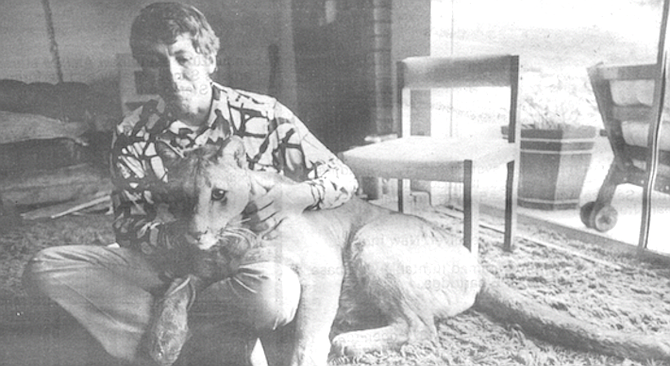
The cougar is not allowed on the tennis courts, but he likes to watch. At night when Bill Barton walks him along the fairways in Penasquitos, they sometimes pass the lighted courts; and there behind the green scrim the cougar stands transfixed, watching the play of the ball and the luminous, misshapen forms of people.

Barton, 40 years old, is a mechanical engineer in San Diego. He lives with his wife, Lynn, and mountain lion. Shucks, in a two-bedroom condominium townhouse on Caminito Orense Este. Larry Lyman, who lives across the way. finds nothing disconcerting about his neighbor's 150-pound cat. “I respect the cougar,” he says. “I respect him very much. But there’s been no trouble. If everybody took as much care with his dog or cat as Bill does with his cougar, we’d have a lot fewer problems.”
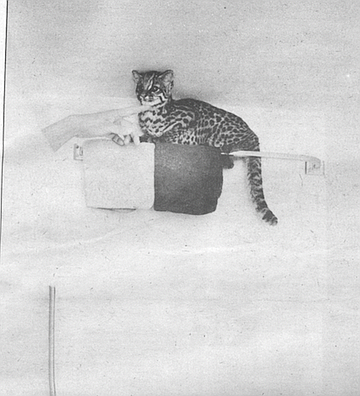
Earlier this month the county’s Animal Control Department issued Barton a citation ordering him to get rid of the big cat, which Barton refused to do. He felt the county had no right to disown him of a peace-loving animal that was licensed by the state Department of Fish and Game. Now the county has come closer to Barton’s view and is willing to let him keep his cougar, so long as he obtains a special county license. The license comes under a law approved Tuesday that applies not only to Shucks, but to all the wolves, raccoons, skunks, leopards, monkeys, ocelots—to all the wild and exotic animals kept illegally in San Diego homes. The strict law of 1974 has been modified to bring the keepers of wild animals into the open with their pets, “where we can keep track of them,’’ says the county director of animal control, Encil Rains.
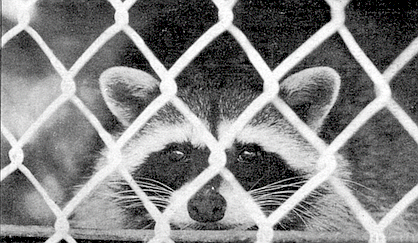
Another effect of the ordinance would be to eventually eliminate the local population of wild and exotic pets. This would occur because the law continues to prohibit the breeding, sale, or importation of wild animals; thus, the present generation would not be replaced. But the effectiveness of this strategy is questioned by some. Among those doubting are conservationists who supported the ordinance and who oppose the keeping of any wild animal in a house-cage. (The Sierra Club successfully lobbied to have the ordinance amended such that it will expire in two years, a move designed to allow for evaluation of its effectiveness.)
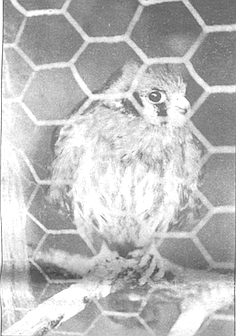
The fact is, however, that wild animals, especially native creatures like the mountain lion and raccoon, are relatively easy to obtain and are likely to remain so. For example. Barton found Shucks through a classified advertisement in the San Diego Union (the cub cost $400 j before he was conceived; at birth the price was another $400). And raccoons will be for sale again in April at the Royal Pet Center in Lynnwood, Los Angeles County, where animal regulations are more liberal.
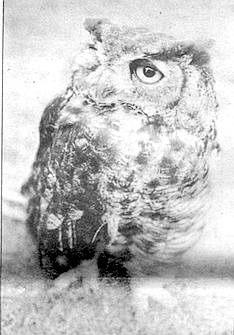
A visitor this month to Barton's townhouse found the front door open. It was a Saturday afternoon, and you could see through the living room, into the backyard, and to the golf course beyond. Hearing the doorbell, the cat came into view. A sign on the front doors reads, “Warning MOUNTAIN LION Loose Inside,” but you could see the cougar was tethered in the backyard with a steel cable sheathed in plastic. The cat is a mature male (castrated), and of the nine mountain lions known to be in private homes in this county. Shucks is among the largest and handsomest. And, Barton claims, the happiest, too.
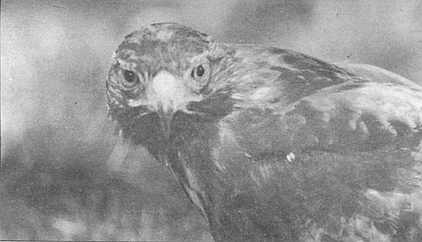
Barton comes around the corner and invites the visitor to the patio, by way of the cluttered garage. It is full of the stuff of good living: two motorcycles, a freezer, a hobby-desk, a furled hang glider, and some equipment for the van. Amid all this, in one corner, is the wire-and-wood cage where Shucks spends most of his time asleep. Here Lynn Barton brings him iced water in the morning and his semi-frozen chicken at midday. Here is the cage the Fish and Game Department approved, despite the fact that it is within the city limits and thus in violation of city-county law.
The cat perks up when people step to the patio. “Shuckers!" says Barton in that tone reserved for pets and small babies. “Who’s that, Shuckers?" The cougar looks bigger outside than he does in his cage, and he’s worth close inspection because even the dedicated outdoorsman is unlikely to see the solitary, reclusive mountain lion in the wild. (It is estimated by the state Department of Fish and Game- that only 700 roam freely in California.) At one time, though, they ranged throughout the United States and can still be found from British Columbia to the northern tip of South America. They have been known in so many areas for so long, a half-dozen names apply: mountain lion, cougar, catamount, painter, puma, panther. The tropical cats are relatively small, and Shucks, who was born in Lakeside of a female from Paraguay, ought to be smaller than he is. Magnificent is what he is—the size of a German shepherd, in colors that range from tawny to milky-tea. He has very large teeth and claws which he likes to sharpen on automobile tires. Barton won’t leave this lovely cat alone with the neighborhood children or with his wife, and. apparently, they wouldn’t want to be alone with the cat.
Ironically, owning a mountain lion like Shucks is probably less difficult, in a legal sense, than owning a falcon. Of would-be falconers, the state requires a lengthy course of instruction and a series of tests. But no such standards apply for the care and breeding of mountain lions or the other animals (deer, pheasant, quail, and chukar) covered by the California Game Breeder’s Permit. A fish and game warden will ask an applicant some questions to determine if he’s fit to keep an animal (the criteria, it appears, are rather subjective). At present, there is no uniform state code applied to the caging of cougars.
At one time the county considered letting Fish and Game handle the permits, under a system used in other counties where wild animals are allowed. The move was opposed by conservationists w ho felt the state would be too lenient, but with the new ordinance, the state’s process becomes effective just the same. A person who has illegally held a monkey, for example, could come in for a county permit and then learn that a state permit and even a federal license may also be required.
By the sound of scraping chairs. Shucks senses a treat. Bill has gone for the short nylon leash because the stranger has asked to pet the cat. “You’d better let me bring him to you," Barton says. Within the range of his tether, his territory, the cat plays rough. Barton, taking no chances, unclips the sail-shackle on the tether and attaches the leash. The cat approaches without hesitation, like a millionaire advancing on a bank teller. Barton has said the cat likes to test newcomers. “He likes to see if he can goose you. He’ll see if you pull back, then he knows you goose easy."
Living with the cat, Barton understands Shucks’ constant search for dominance, and has even seen something of the way the cougar would hunt in the wild. The penetrating, honey-yellow eyes would track prey up to the size of cattle (a taste for beef accounts for the decimation of mountain lions in the eastern two-thirds of this country, although some rare cats still exist in Florida.) The cougar relies on stealth and surprise, of which he has enough to show off. Says Lynn: “I’ll walk through the house and I’ll call and call, but he won’t come out. And then he appears behind me."
Asked if keeping this cat amounted to an ego trip (a question which had to be asked three times before it was answered). Barton says the greatest satisfaction is in earning the friendship of this animal. “It’s a thrill just to see him, and I feel it now more than ever.”
Not far from the Bartons’ town-house, on Sagebrush Drive in Poway, live a couple who also keep wild animals, but who keep them for the thrill of letting them go. Marge and Tom Knothe, both schoolteachers, moved out to this one-acre site five years ago when their house in East San Diego became too crowded with injured animals they were nursing back to health. In their garage: a red tail hawk, a great owl, a coyote, an adult opossum and a litter of baby opossum, various small birds, a refrigerator for beef-heart and other supplies, and a few dozen rats sleeping and nibbling in sawdust tubs. Most of the animals stay in the garage for special treatment (a hundred more are in cages outside), but the rats themselves are perfectly healthy; they will become vital food for the hawks and other birds of prey. The Knothes have found nothing better for reviving wildness in a bird than a bit of squealing meat. It is the Knothes’ special problem—to prevent their animals from becoming tame and unfit to live again in the wild.
Another problem concerns this new county ordinance; though it doesn’t apply to native birds or small rodents—which is fine with the Knothes because birds are the most common animals kept at their North County Wildlife Rescue Center— the law does limit everyone to four mammals, and on any day the Knothes may have six or seven raccoons, coyote, or bobcat. The solution, say county officials, is for them to apply for a special use permit and establish a private zoo, which is exempt from the new law. But that could cost $750—no small sum to the couple who donated $4,800 last year to balance the $13,000 budget of their nonprofit corporation.
“What they should have done all along is to get a special use permit,” says Encil Rains. But Tom Knothe fears the reaction of his neighbors when they receive notice of a public hearing concerning a zoo on their block. Knothe wants the county to write his operation into a special ordinance, and believes the supervisors are naive if they expect people to bring their animals in for permits. “I don’t know who’s going to sign up for it," he says. “A lot of people who have exotic pets have had them, my God, ten or 15 years, and I don’t think any one of them is going to take a chance of losing his animal by going in to ask for a permit." (The county animal control department estimates between 150 and 200 wild animals are kept in private homes here, but this figure is based on a per capita formula that could be far from accurate.) However, Marge Knothe, for her part, can’t seem to take the legal issues seriously. With that slightly abstracted look teachers develop, she ambles through the back lot, pausing a moment to save a bee that has fallen into slop in the cage of Bert and Joe, two young crows, then continues to the corner where two bobcats are lazing in the sun. One of these, whose name is Bobkitty, has been raised here from a cub. Mrs. Knothe says she doesn’t know if this cat could survive outside its cage. “We bottle fed him, and he took to it. And now he trusts people, unfortunately.”
As trust is the soul of tameness, some animals that live with people may continue to look fearsome when the love of humans has long ago transformed them. There is a cougar in Lakeside, for example, that doesn’t like meat, that squats in a litter box to pee. that sulks when she’s not set free to mingle with party guests. Candice Wolf, a dog trainer, says this cougar would die of loneliness if she were loosed in the wild. “She’s not a cougar; she’s a pussycat,” says Wolf, 24, offering her pet some cottage cheese.
“And if these animals are so happy and so tame, then why are they kept in cages?" asks Martha Hall, who runs a wildlife rescue center in Alpine. In the case of Mrs. Wolfs cougar, the cage protects the animal from people, not vice versa. But Hall dislikes all cages—especially the ones she must clean every day—and challenges the keepers of exotic pets to explain why cages are necessary. “If the animals weren’t in cages they would just split," she says. “But instead, they’re kept around for somebody’s enjoyment. I mean, everybody’s got a Gordon setter, but it’s really neat if you can come up with a wolf, right? Then most people don't keep the animal very long because the novelty of cleaning the cage everyday is very short, believe me.
One local veterinarian, who wished to remain anonymous, opposes the keeping of wild animals because the creatures develop a need for the kind of constant care that does more than merely watch after their health; they grow accustomed to people, quiet themselves to tameness, and crave affectionate attention. He says he has seen very few cases in which a domesticated wild animal has been beaten or poisoned by its owners; the more common injury is subtle—the keepers ignore their pet.
“It’s pretty hard for me to talk out of both sides of my mouth because I have a cougar,” says the vet, who lives on five acres in El Cajon, and keeps the cat without the proper permit. “But I think I am one of the exceptions.” He, or someone in his family, handles the cat every day. Bill Barton spends two hours a day with Shucks and says, “The one thing people don’t realize is how much time it takes, and most people aren’t willing to spend that time."
The county’s new law is supposed to screen out those who don’t care properly for their animals. The reasoning is that wild beasts, since they have no privilege of remaining in their natural state, should at least be protected from abuse in captivity. But some exotic-pet owners carry the rationale a step further— captivity is preferable for some animals.
A Pacific Beach housewife keeps six rare tropical cats—five of them endangered species—and claims future generations are better off because of their captivity.
“We are out to save the leopard cat and the oncilla,” says 28-year-old Joyce Little. Though she holds the cats illegally, and won’t say where they were obtained (the first was a gift from friends), Little discounts the charge that “people who keep exotic animals are robbing nature, like they’re going out and clubbing mothers and taking away their
young; that just isn’t true.” She I hopes the leopard cat and oncilla " (felis tigrina) will become new breeds of house cats. Smaller than any tabby, these exotics, she says, are cleaner and stronger and “generally make more interesting pets.”
And while they creep toward extinction in Eastern Asia and South America, they should abound in Pacific Beach. “I don’t approve of the importation of exotics (her cats were born in captivity), but they aren’t surviving in their natural state, so why not do what we can to save them here?” The jungle is their natural habitat, and Mrs..Little has taken pains to re-create that environment. An automatic heater keeps the cat-garage warm, and Gerber’s strained meats and vitamin supplements form part of an elaborate diet. Galvanized metal grates cover all the windows; they will help keep these cats insulated from the damp coastal chill all their days. The oncilla spends most of its time in the bathroom.
Is there no more wilderness? Are wild animals better off in captivity? “That doesn’t make any logical sense at all,” says Claude Hill, curator of conservation at the San Diego Zoo. | “There’s plenty of wilderness left. The Amazon? That’s thousands of square miles; and there’s the Congo. Certainly some areas are in trouble—big areas in big trouble. But there’s some left.” Hill adds, however, that some animals do fare better in captivity than they would in the wild. “You have the absence of predators, so the animals sleep better; they really do. Elephants and !giraffes will lie down. A giraffe will seldom lie down in the wild."
So the giraffes know it, too— there is no more wilderness in San Diego. But there are wilderness animals in backyards and garages, and the county’s law intends to deal with the situation as is.
Bill Barton sits back in a patio chair as his big cat paces at the end of its tether. “Sometimes I ask myself, ’gee, should the animal be out in the wild instead of here in the house? And I almost say that as if it were my mind.” He pauses, then picks up with a different idea. “You know, they don’t have it all that good out there. They lead a limited and uninteresting life. I know one thing: Shucks gets to go a lot of places and he clearly enjoys riding. He has a good sense of where he is and he perks up when we get near Penasquitos. He knows he’s home.
“We take him down to the 7-Eleven when we run to get milk, and the people get to know him—you know—that cougar in the orange van."


The cougar is not allowed on the tennis courts, but he likes to watch. At night when Bill Barton walks him along the fairways in Penasquitos, they sometimes pass the lighted courts; and there behind the green scrim the cougar stands transfixed, watching the play of the ball and the luminous, misshapen forms of people.

Barton, 40 years old, is a mechanical engineer in San Diego. He lives with his wife, Lynn, and mountain lion. Shucks, in a two-bedroom condominium townhouse on Caminito Orense Este. Larry Lyman, who lives across the way. finds nothing disconcerting about his neighbor's 150-pound cat. “I respect the cougar,” he says. “I respect him very much. But there’s been no trouble. If everybody took as much care with his dog or cat as Bill does with his cougar, we’d have a lot fewer problems.”

Earlier this month the county’s Animal Control Department issued Barton a citation ordering him to get rid of the big cat, which Barton refused to do. He felt the county had no right to disown him of a peace-loving animal that was licensed by the state Department of Fish and Game. Now the county has come closer to Barton’s view and is willing to let him keep his cougar, so long as he obtains a special county license. The license comes under a law approved Tuesday that applies not only to Shucks, but to all the wolves, raccoons, skunks, leopards, monkeys, ocelots—to all the wild and exotic animals kept illegally in San Diego homes. The strict law of 1974 has been modified to bring the keepers of wild animals into the open with their pets, “where we can keep track of them,’’ says the county director of animal control, Encil Rains.

Another effect of the ordinance would be to eventually eliminate the local population of wild and exotic pets. This would occur because the law continues to prohibit the breeding, sale, or importation of wild animals; thus, the present generation would not be replaced. But the effectiveness of this strategy is questioned by some. Among those doubting are conservationists who supported the ordinance and who oppose the keeping of any wild animal in a house-cage. (The Sierra Club successfully lobbied to have the ordinance amended such that it will expire in two years, a move designed to allow for evaluation of its effectiveness.)

The fact is, however, that wild animals, especially native creatures like the mountain lion and raccoon, are relatively easy to obtain and are likely to remain so. For example. Barton found Shucks through a classified advertisement in the San Diego Union (the cub cost $400 j before he was conceived; at birth the price was another $400). And raccoons will be for sale again in April at the Royal Pet Center in Lynnwood, Los Angeles County, where animal regulations are more liberal.

A visitor this month to Barton's townhouse found the front door open. It was a Saturday afternoon, and you could see through the living room, into the backyard, and to the golf course beyond. Hearing the doorbell, the cat came into view. A sign on the front doors reads, “Warning MOUNTAIN LION Loose Inside,” but you could see the cougar was tethered in the backyard with a steel cable sheathed in plastic. The cat is a mature male (castrated), and of the nine mountain lions known to be in private homes in this county. Shucks is among the largest and handsomest. And, Barton claims, the happiest, too.

Barton comes around the corner and invites the visitor to the patio, by way of the cluttered garage. It is full of the stuff of good living: two motorcycles, a freezer, a hobby-desk, a furled hang glider, and some equipment for the van. Amid all this, in one corner, is the wire-and-wood cage where Shucks spends most of his time asleep. Here Lynn Barton brings him iced water in the morning and his semi-frozen chicken at midday. Here is the cage the Fish and Game Department approved, despite the fact that it is within the city limits and thus in violation of city-county law.
The cat perks up when people step to the patio. “Shuckers!" says Barton in that tone reserved for pets and small babies. “Who’s that, Shuckers?" The cougar looks bigger outside than he does in his cage, and he’s worth close inspection because even the dedicated outdoorsman is unlikely to see the solitary, reclusive mountain lion in the wild. (It is estimated by the state Department of Fish and Game- that only 700 roam freely in California.) At one time, though, they ranged throughout the United States and can still be found from British Columbia to the northern tip of South America. They have been known in so many areas for so long, a half-dozen names apply: mountain lion, cougar, catamount, painter, puma, panther. The tropical cats are relatively small, and Shucks, who was born in Lakeside of a female from Paraguay, ought to be smaller than he is. Magnificent is what he is—the size of a German shepherd, in colors that range from tawny to milky-tea. He has very large teeth and claws which he likes to sharpen on automobile tires. Barton won’t leave this lovely cat alone with the neighborhood children or with his wife, and. apparently, they wouldn’t want to be alone with the cat.
Ironically, owning a mountain lion like Shucks is probably less difficult, in a legal sense, than owning a falcon. Of would-be falconers, the state requires a lengthy course of instruction and a series of tests. But no such standards apply for the care and breeding of mountain lions or the other animals (deer, pheasant, quail, and chukar) covered by the California Game Breeder’s Permit. A fish and game warden will ask an applicant some questions to determine if he’s fit to keep an animal (the criteria, it appears, are rather subjective). At present, there is no uniform state code applied to the caging of cougars.
At one time the county considered letting Fish and Game handle the permits, under a system used in other counties where wild animals are allowed. The move was opposed by conservationists w ho felt the state would be too lenient, but with the new ordinance, the state’s process becomes effective just the same. A person who has illegally held a monkey, for example, could come in for a county permit and then learn that a state permit and even a federal license may also be required.
By the sound of scraping chairs. Shucks senses a treat. Bill has gone for the short nylon leash because the stranger has asked to pet the cat. “You’d better let me bring him to you," Barton says. Within the range of his tether, his territory, the cat plays rough. Barton, taking no chances, unclips the sail-shackle on the tether and attaches the leash. The cat approaches without hesitation, like a millionaire advancing on a bank teller. Barton has said the cat likes to test newcomers. “He likes to see if he can goose you. He’ll see if you pull back, then he knows you goose easy."
Living with the cat, Barton understands Shucks’ constant search for dominance, and has even seen something of the way the cougar would hunt in the wild. The penetrating, honey-yellow eyes would track prey up to the size of cattle (a taste for beef accounts for the decimation of mountain lions in the eastern two-thirds of this country, although some rare cats still exist in Florida.) The cougar relies on stealth and surprise, of which he has enough to show off. Says Lynn: “I’ll walk through the house and I’ll call and call, but he won’t come out. And then he appears behind me."
Asked if keeping this cat amounted to an ego trip (a question which had to be asked three times before it was answered). Barton says the greatest satisfaction is in earning the friendship of this animal. “It’s a thrill just to see him, and I feel it now more than ever.”
Not far from the Bartons’ town-house, on Sagebrush Drive in Poway, live a couple who also keep wild animals, but who keep them for the thrill of letting them go. Marge and Tom Knothe, both schoolteachers, moved out to this one-acre site five years ago when their house in East San Diego became too crowded with injured animals they were nursing back to health. In their garage: a red tail hawk, a great owl, a coyote, an adult opossum and a litter of baby opossum, various small birds, a refrigerator for beef-heart and other supplies, and a few dozen rats sleeping and nibbling in sawdust tubs. Most of the animals stay in the garage for special treatment (a hundred more are in cages outside), but the rats themselves are perfectly healthy; they will become vital food for the hawks and other birds of prey. The Knothes have found nothing better for reviving wildness in a bird than a bit of squealing meat. It is the Knothes’ special problem—to prevent their animals from becoming tame and unfit to live again in the wild.
Another problem concerns this new county ordinance; though it doesn’t apply to native birds or small rodents—which is fine with the Knothes because birds are the most common animals kept at their North County Wildlife Rescue Center— the law does limit everyone to four mammals, and on any day the Knothes may have six or seven raccoons, coyote, or bobcat. The solution, say county officials, is for them to apply for a special use permit and establish a private zoo, which is exempt from the new law. But that could cost $750—no small sum to the couple who donated $4,800 last year to balance the $13,000 budget of their nonprofit corporation.
“What they should have done all along is to get a special use permit,” says Encil Rains. But Tom Knothe fears the reaction of his neighbors when they receive notice of a public hearing concerning a zoo on their block. Knothe wants the county to write his operation into a special ordinance, and believes the supervisors are naive if they expect people to bring their animals in for permits. “I don’t know who’s going to sign up for it," he says. “A lot of people who have exotic pets have had them, my God, ten or 15 years, and I don’t think any one of them is going to take a chance of losing his animal by going in to ask for a permit." (The county animal control department estimates between 150 and 200 wild animals are kept in private homes here, but this figure is based on a per capita formula that could be far from accurate.) However, Marge Knothe, for her part, can’t seem to take the legal issues seriously. With that slightly abstracted look teachers develop, she ambles through the back lot, pausing a moment to save a bee that has fallen into slop in the cage of Bert and Joe, two young crows, then continues to the corner where two bobcats are lazing in the sun. One of these, whose name is Bobkitty, has been raised here from a cub. Mrs. Knothe says she doesn’t know if this cat could survive outside its cage. “We bottle fed him, and he took to it. And now he trusts people, unfortunately.”
As trust is the soul of tameness, some animals that live with people may continue to look fearsome when the love of humans has long ago transformed them. There is a cougar in Lakeside, for example, that doesn’t like meat, that squats in a litter box to pee. that sulks when she’s not set free to mingle with party guests. Candice Wolf, a dog trainer, says this cougar would die of loneliness if she were loosed in the wild. “She’s not a cougar; she’s a pussycat,” says Wolf, 24, offering her pet some cottage cheese.
“And if these animals are so happy and so tame, then why are they kept in cages?" asks Martha Hall, who runs a wildlife rescue center in Alpine. In the case of Mrs. Wolfs cougar, the cage protects the animal from people, not vice versa. But Hall dislikes all cages—especially the ones she must clean every day—and challenges the keepers of exotic pets to explain why cages are necessary. “If the animals weren’t in cages they would just split," she says. “But instead, they’re kept around for somebody’s enjoyment. I mean, everybody’s got a Gordon setter, but it’s really neat if you can come up with a wolf, right? Then most people don't keep the animal very long because the novelty of cleaning the cage everyday is very short, believe me.
One local veterinarian, who wished to remain anonymous, opposes the keeping of wild animals because the creatures develop a need for the kind of constant care that does more than merely watch after their health; they grow accustomed to people, quiet themselves to tameness, and crave affectionate attention. He says he has seen very few cases in which a domesticated wild animal has been beaten or poisoned by its owners; the more common injury is subtle—the keepers ignore their pet.
“It’s pretty hard for me to talk out of both sides of my mouth because I have a cougar,” says the vet, who lives on five acres in El Cajon, and keeps the cat without the proper permit. “But I think I am one of the exceptions.” He, or someone in his family, handles the cat every day. Bill Barton spends two hours a day with Shucks and says, “The one thing people don’t realize is how much time it takes, and most people aren’t willing to spend that time."
The county’s new law is supposed to screen out those who don’t care properly for their animals. The reasoning is that wild beasts, since they have no privilege of remaining in their natural state, should at least be protected from abuse in captivity. But some exotic-pet owners carry the rationale a step further— captivity is preferable for some animals.
A Pacific Beach housewife keeps six rare tropical cats—five of them endangered species—and claims future generations are better off because of their captivity.
“We are out to save the leopard cat and the oncilla,” says 28-year-old Joyce Little. Though she holds the cats illegally, and won’t say where they were obtained (the first was a gift from friends), Little discounts the charge that “people who keep exotic animals are robbing nature, like they’re going out and clubbing mothers and taking away their
young; that just isn’t true.” She I hopes the leopard cat and oncilla " (felis tigrina) will become new breeds of house cats. Smaller than any tabby, these exotics, she says, are cleaner and stronger and “generally make more interesting pets.”
And while they creep toward extinction in Eastern Asia and South America, they should abound in Pacific Beach. “I don’t approve of the importation of exotics (her cats were born in captivity), but they aren’t surviving in their natural state, so why not do what we can to save them here?” The jungle is their natural habitat, and Mrs..Little has taken pains to re-create that environment. An automatic heater keeps the cat-garage warm, and Gerber’s strained meats and vitamin supplements form part of an elaborate diet. Galvanized metal grates cover all the windows; they will help keep these cats insulated from the damp coastal chill all their days. The oncilla spends most of its time in the bathroom.
Is there no more wilderness? Are wild animals better off in captivity? “That doesn’t make any logical sense at all,” says Claude Hill, curator of conservation at the San Diego Zoo. | “There’s plenty of wilderness left. The Amazon? That’s thousands of square miles; and there’s the Congo. Certainly some areas are in trouble—big areas in big trouble. But there’s some left.” Hill adds, however, that some animals do fare better in captivity than they would in the wild. “You have the absence of predators, so the animals sleep better; they really do. Elephants and !giraffes will lie down. A giraffe will seldom lie down in the wild."
So the giraffes know it, too— there is no more wilderness in San Diego. But there are wilderness animals in backyards and garages, and the county’s law intends to deal with the situation as is.
Bill Barton sits back in a patio chair as his big cat paces at the end of its tether. “Sometimes I ask myself, ’gee, should the animal be out in the wild instead of here in the house? And I almost say that as if it were my mind.” He pauses, then picks up with a different idea. “You know, they don’t have it all that good out there. They lead a limited and uninteresting life. I know one thing: Shucks gets to go a lot of places and he clearly enjoys riding. He has a good sense of where he is and he perks up when we get near Penasquitos. He knows he’s home.
“We take him down to the 7-Eleven when we run to get milk, and the people get to know him—you know—that cougar in the orange van."
Comments